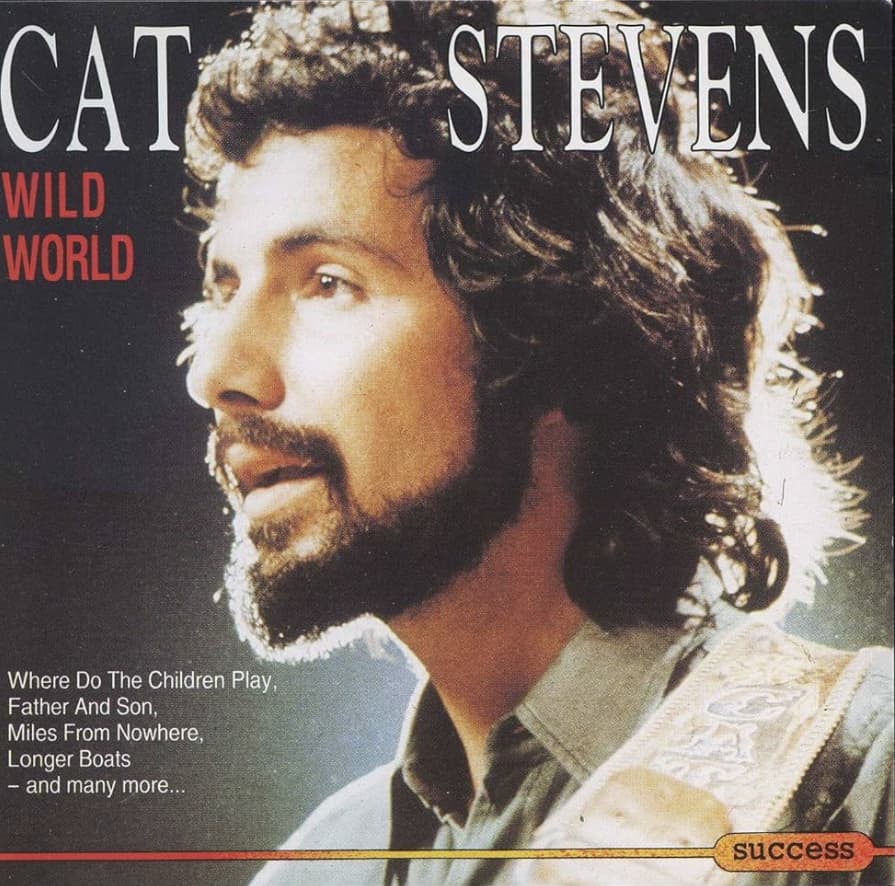
Exploring the Timeless Allure of Cat Stevens’ “Wild World”
When Cat Stevens released “Wild World” in September 1970, it wasn’t just another track—it was a poignant reflection of love, loss, and the inevitable growth that follows heartbreak. Embedded within the folky strums of Stevens’ guitar, the song, which first appeared on his fourth album, Tea for the Tillerman, emerged as a tender yet profound ballad that struck a chord worldwide.
“Wild World” has since been etched into the annals of music history not only for its melodic allure but also for its heartfelt lyrics. The song was inspired by Stevens’ relationship with actress Patti D’Arbanville. The pair’s breakup infused the lyrics with a genuine pathos, as Stevens crooned advice to his departing lover, capturing the complexity of wishing well to someone he loved despite the pain of separation.
Musically, “Wild World” is a showcase of Stevens’ ability to blend simple yet captivating melodies with deep emotional undertones. The song is marked by its iconic, delicate guitar work and Stevens’ soulful voice. It’s structured around a chord sequence common in Spanish music, which Stevens uniquely twisted to craft a sound that was all his own. This musical arrangement supports the lyrical theme of departure, highlighting the bittersweet reality of letting go.
Upon its release, the single quickly climbed the charts, peaking at No. 11 on the Billboard Hot 100 and gaining notable positions across the globe—from Australia to Canada and even Belgium. This chart performance was not just a commercial victory; it was a testament to the song’s universal appeal, resonating with audiences facing their own personal crossroads.
“Wild World” also played a crucial role in the success of Tea for the Tillerman, propelling the album into regular rotation on FM radio and earning it critical acclaim. Chris Blackwell of Island Records heralded the album as one of the best they had ever released, a sentiment echoed by many critics and fans alike.
Despite its success and acclaim, “Wild World” has not been without its critics. Some have interpreted the lyrics as condescending or even misogynistic, pointing to the way the male narrator advises his female lover about the harshness of the world outside their relationship. This interpretation sparked debates about gender roles in popular music, contributing to a broader conversation about the portrayal of women in the arts.
Throughout the years, “Wild World” has been covered by various artists, each bringing their own interpretation and style to the classic tune. From Maxi Priest’s reggae-infused version in 1988 to Mr. Big’s rock rendition in 1993, the song’s adaptability across genres underscores its enduring appeal and the timeless quality of Stevens’ songwriting.
Today, “Wild World” remains a beloved classic, a song that continues to be discovered by new generations of listeners. Its mix of tender advice, melodic charm, and lyrical depth makes it a standout track in the folk genre and a poignant reminder of Cat Stevens’ mastery as a songwriter and musician.